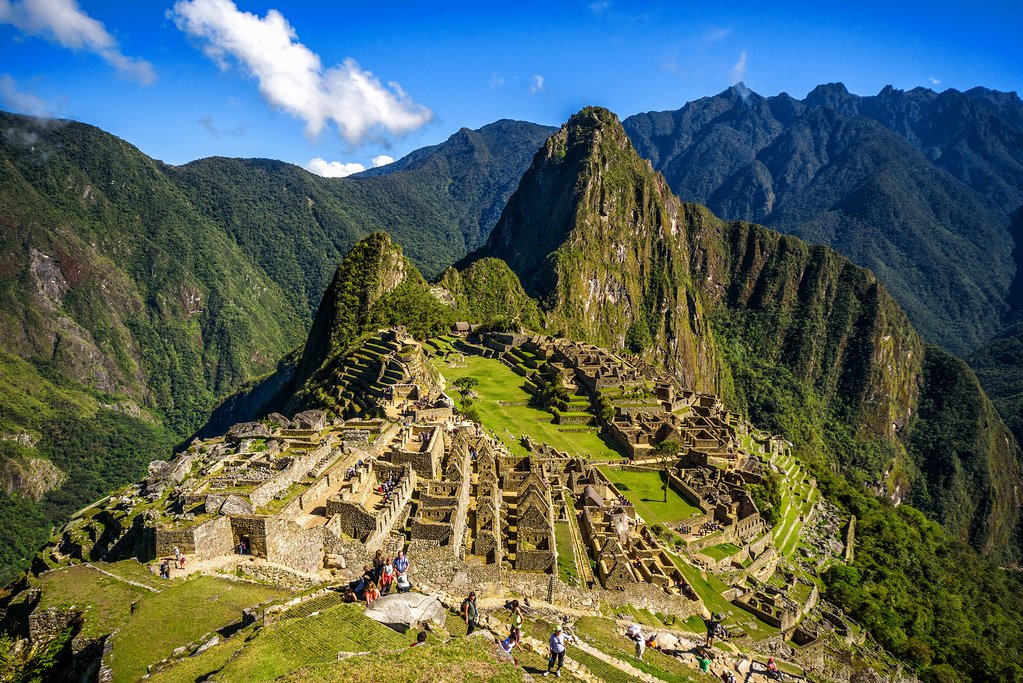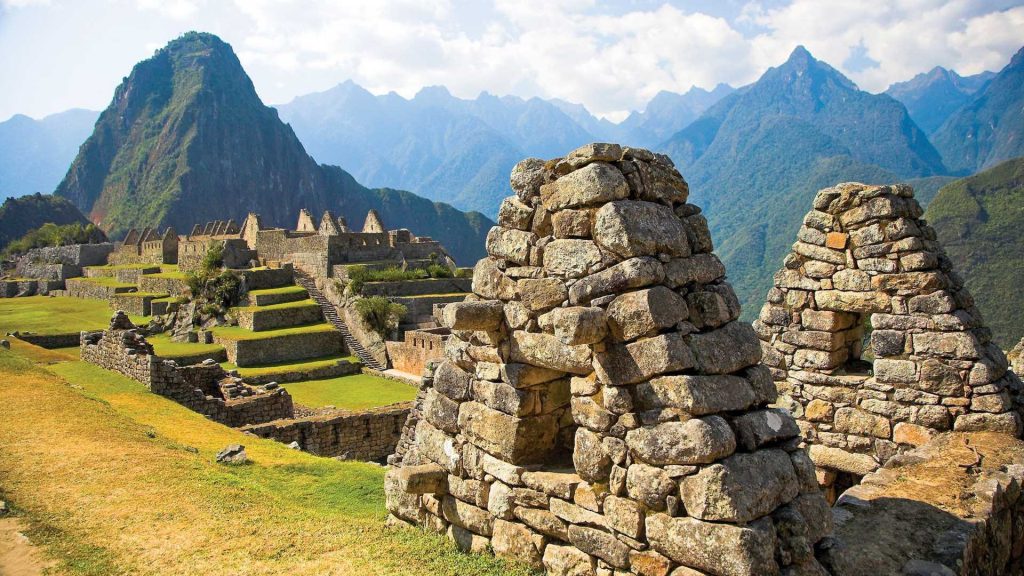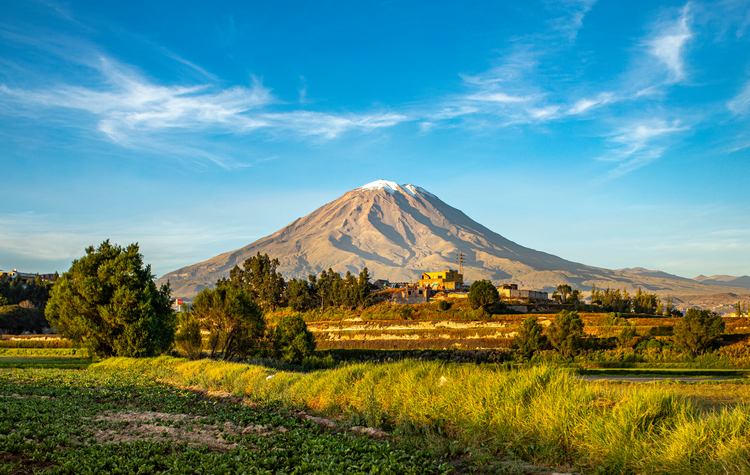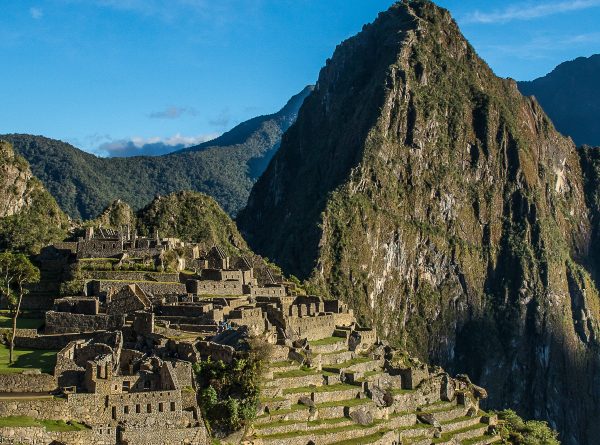
Cusco Region: A Gateway to Ancient Civilization
Cusco, Peru’s enchanting city nestled in the Andes, beckons you to embark on a journey through time. Once the capital of the mighty Inca Empire, Cusco exudes a rich history that lingers in its cobblestone streets, majestic ruins, and vibrant culture.
Surrounded by breathtaking mountains, this high-altitude gem offers a stunning backdrop for exploration. Immerse yourself in the diverse traditions of the local population, witness vibrant festivals, and be captivated by the harmonious blend of ancient and contemporary cultures. Cusco region invites you to unravel the mysteries of the past, creating memories that will last a lifetime.
Unveiling the Mysteries: Exploring Machu Picchu
Machu Picchu, the legendary “Lost City of the Incas,” is a historical marvel that captivates visitors. This ancient citadel, nestled high in Peru’s Andes Mountains, showcases the remarkable achievements of the Inca civilization.
Rediscovered by Hiram Bingham in 1911, Machu Picchu has since become a UNESCO World Heritage Site and one of the World’s New Seven Wonders. Its architectural wonders and engineering marvels continue to amaze. The perfectly fitted stone walls, intricate terraces, and advanced drainage systems demonstrate the Inca’s masterful construction techniques.
The city’s strategic layout, harmoniously integrated into the natural landscape, reflects their profound understanding of astronomy, topography, and agriculture. Highlights of Machu Picchu include the Temple of the Sun, an astronomical observatory, and the Intihuatana Stone, a sundial and ceremonial centrepiece.
The terraces, known as “Andenes,” showcase sustainable agricultural practices. The panoramic vistas of surrounding mountains and deep valleys add to the site’s ethereal beauty. Machu Picchu’s allure lies in its mysterious aura and spiritual atmosphere. Its remote location and enigmatic purpose continue to fascinate. Exploring this ancient city allows visitors to witness the ingenuity and cultural legacy of the Incas.
Embark on a journey to the Cusco region of Machu Picchu and immerse yourself in its awe-inspiring marvels. Let its history and breathtaking beauty inspire you as you unveil the secrets of this lost city. Machu Picchu awaits, ready to leave an indelible mark on your soul.
Tips for Planning a Visit to Machu Picchu

Embarking on a journey to Machu Picchu is an unforgettable experience that requires careful planning. Here are some essential tips to help you make the most of your visit and ensure a seamless trip to this iconic destination.
- Secure Permits: Obtain entry permits in advance through authorized operators or the official website to ensure availability.
- Choose the Right Time: Visit during April to May or September to October for fewer crowds and good weather. Avoid the rainy season from November to March.
- Select the Ideal Route: Hike the Inca Trail or consider alternative treks like Salkantay or Lares. Alternatively, take a train to Aguas Calientes and then a bus to Machu Picchu.
- Acclimate to Altitude: Spend time in high-altitude locations to adjust before visiting. Stay hydrated and avoid excessive exertion.
- Hire a Guide: Enhance your experience with a knowledgeable guide who can provide historical and cultural insights.
- Pack Essentials: Bring layers, a waterproof jacket, comfortable shoes, sunscreen, a hat, insect repellent, a reusable water bottle, and the passport.
- Respect the Site: Follow rules, stay on designated paths, avoid touching ruins, and carry out waste. Preserve this archaeological treasure.
With these tips, you’ll be well-prepared for an incredible journey to Machu Picchu. Immerse yourself in its beauty, history, and spirituality, creating lasting memories.
The Inca Trail: Trekking to Machu Picchu
For hiking enthusiasts seeking an extraordinary adventure, the classic Inca Trail trek to Machu Picchu is an iconic journey that unveils breathtaking landscapes and ancient ruins. Additionally, alternative routes offer equally captivating experiences. Here’s an overview, itinerary, and practical tips to prepare for the trek, ensuring an unforgettable journey.
The Classic Inca Trail:
The classic Inca Trail is a four-day trek covering approximately 43 kilometers (26 miles) of awe-inspiring terrain in the cusco region. This route immerses trekkers in the natural beauty of the Andes while leading them through ancient Inca sites and stunning mountain vistas.
Itinerary:
- Day 1: Begin at Km 82, pass through the Sacred Valley, and reach the campsite at Wayllabamba.
- Day 2: Ascend to the highest point, Dead Woman’s Pass, and descend to Pacaymayo campsite.
- Day 3: Visit archaeological sites such as Runkurakay, Sayacmarca, and Wiñay Wayna, and finally reach Inti Punku, the Sun Gate, offering the first glimpse of Machu Picchu. Descend to Aguas Calientes.
- Day 4: Witness the sunrise over Machu Picchu and explore the ancient city with a guide. Optionally, hike Huayna Picchu or Machu Picchu Mountain. Return to Cusco by train.
Key Landmarks:
The Inca Trail boasts remarkable landmarks, including the Runcuracay ruins, the impressive Dead Woman’s Pass at 4,215 meters (13,828 feet), the archaeological sites of Sayacmarca and Wiñay Wayna, and the breathtaking Inti Punku, providing panoramic views of Machu Picchu.
Alternative Routes:
For those unable to secure Inca Trail permits or seeking different experiences, alternative routes are available:
- Salkantay Trek: Offers incredible mountain vistas, diverse ecosystems, and the opportunity to visit the stunning Salkantay Mountain.
- Lares Trek: Showcases traditional Andean communities, stunning landscapes, and soothing hot springs.
Beyond Machu Picchu: Exploring Sacred Valley
Nestled in Peru’s Andean mountains, the Sacred Valley of the Incas holds deep significance in Inca civilization. This stunning valley, once the heart of the Inca Empire, is a treasure trove of archaeological wonders, breathtaking landscapes, and vibrant indigenous communities.
Blessed with fertile land and a moderate climate, the Sacred Valley served as the agricultural breadbasket of the Incas. Stretching from Pisac to Ollantaytambo, it was a vital center for economic, political, and religious activities.
Pisac in the cusco region is a must-visit site, renowned for its Inca ruins and lively handicraft market. Explore terraced agricultural terrains, intricate stone architecture, and sacred ceremonial sites that showcase Inca ingenuity. Engage with local artisans and witness traditional weaving and pottery techniques.
Continue your journey to Ollantaytambo, an archaeological marvel frozen in time. This Inca fortress features remarkable stone structures, massive terraces, and a sophisticated irrigation system. Ollantaytambo played a significant role in the Inca resistance against Spanish invaders, adding historical layers to its charm.
Another extraordinary site is Moray, with its unique concentric terraces resembling an amphitheater. These terraces acted as an agricultural laboratory, allowing the Incas to experiment with different crops and adapt to varying altitudes.
Immerse yourself in the enchanting beauty of the Sacred Valley. Explore archaeological sites, experience the vibrant local culture, and engage in outdoor activities like hiking and biking. Enjoy picturesque villages and panoramic viewpoints, surrounded by majestic landscapes.
The Sacred Valley showcases the Inca’s architectural prowess and preserves indigenous communities’ rich traditions. Interact with locals, savor Andean cuisine, and witness colorful festivals celebrating the valley’s cultural heritage.
Journey through the Sacred Valley and be captivated by its ancient ruins, breathtaking landscapes, and a sense of timeless wonder. Let Pisac, Ollantaytambo, and Moray transport you back in time to the grandeur of the Inca civilization.
Adventure and Outdoor Activities

The Cusco region of Peru is a haven for adventurers, offering exciting activities and breathtaking natural wonders. Whitewater rafting in the Urubamba River provides an adrenaline rush amidst the stunning scenery of the Sacred Valley. Mountain biking enthusiasts can explore ancient Inca paths, remote villages, and picturesque valleys, immersing themselves in the region’s beauty.
Rainbow Mountain, or Vinicunca, is a geological marvel that captivates travelers. Hike through the Andean landscapes and witness the vibrant layers of mineral-rich rock that create a mesmerizing rainbow effect. The summit rewards you with panoramic views of snow-capped peaks.
Humantay Lake is another gem, nestled high in the Andes. A scenic hike takes you to this turquoise jewel surrounded by towering mountains and glaciers, offering a serene and awe-inspiring experience. Embrace responsible tourism practices by choosing reputable operators and respecting the environment. Safety is paramount, so ensure proper equipment and qualified guides.
The Cusco region beckons with its thrilling adventures and stunning landscapes. Whether seeking an adrenaline rush or moments of natural beauty, Cusco offers an array of experiences that will leave indelible memories.
Exploring Inca Ruins beyond Machu Picchu
Beyond the renowned Machu Picchu, the Cusco region of Peru holds a wealth of lesser-known Inca ruins that offer a fascinating glimpse into the ancient civilization. Let’s explore the historical significance and unique features of three remarkable sites: Choquequirao, Sacsayhuaman, and Ollantaytambo.
Choquequirao:
Hidden in the Vilcabamba mountains, Choquequirao is an impressive Inca ruin, often called Machu Picchu’s “sister city.” This remote site served as an administrative and religious center. Its expansive terraces, ceremonial platforms, and intricate stone structures showcase Inca architecture. Choquequirao’s secluded location offers an adventurous and solitary experience for visitors.
Sacsayhuaman:
Perched above Cusco, Sacsayhuaman is a remarkable Inca fortress. The massive limestone blocks, skillfully fitted without mortar, exhibit the Incas’ engineering prowess. Sacsayhuaman played a significant role in ceremonies and defense. Explore its towering walls, impressive towers, and enjoy panoramic views of Cusco.
Ollantaytambo:
At the entrance of the Sacred Valley, Ollantaytambo is an exceptionally preserved Inca site. It served as a fortress, agricultural center, and ceremonial complex. The massive terraces, intricate stonework, and advanced irrigation system demonstrate Inca architectural and engineering skills. Ollantaytambo also holds historical significance as a site of resistance against the Spanish conquistadors.
Exploring these lesser-known Inca ruins offers a deeper understanding of the civilization’s ingenuity, religious practices, and strategic planning. While not as famous as Machu Picchu, Choquequirao, Sacsayhuaman, and Ollantaytambo provide an off-the-beaten-path adventure, allowing visitors to appreciate the lesser-known but equally captivating facets of the Inca heritage.
Conclusion
Discover the captivating Cusco region of Peru, with its ancient Inca ruins, stunning landscapes, and thrilling adventures. From Machu Picchu to lesser-known sites like Choquequirao, Cusco offers a rich historical and cultural experience, inviting travelers to immerse themselves in its wonders and create unforgettable memories.
People also read:

